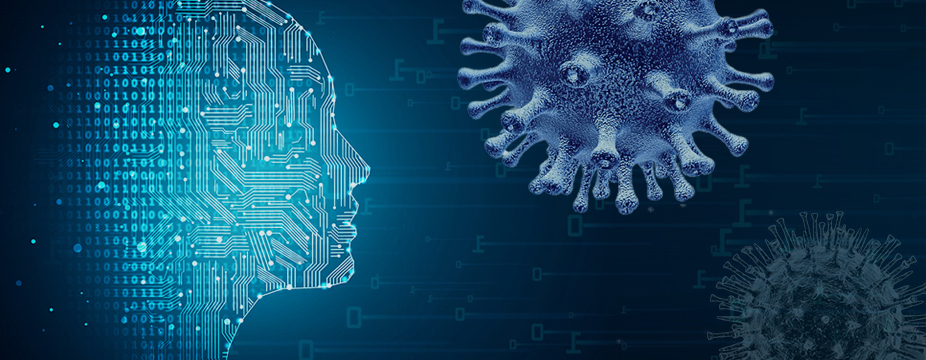|
Getting your Trinity Audio player ready...
|
More than 200 countries around the world are battling COVID-19, and this pandemic situation is challenging the most sophisticated healthcare systems around the globe. AI and intelligent systems are providing aid in preventing the spread of COVID-19 and also helping governments in offering better patient outcomes & reducing mortality rates as low as possible.
Since the first report of coronavirus (COVID-19) in Wuhan, China, the technology giants have initiated leveraging artificial intelligence, data science, and other technologies to track and trace the epidemic path of COVID-19. And help healthcare operators, governments, and the public stay alert and informed about its spread and precautions to be made to stay safe. Intelligent systems are analyzing the data around the globe in real-time to provide accurate and reliable information. Here is how clinicians, academics, and governments are activating AI, data science, and technology to fight back against COVID-19.
Distinct ways AI aids COVID-19:
1. ML for social media monitoring
During the period of the pandemic, many international organizations and companies have either encouraged or made it mandatory to work from home for maintaining social distancing to prevent the spread of the disease. To help the companies successfully monitor, coordinate, completing assigned tasks remotely, Machine Learning (ML) based ERP systems are securing and storing the information communicated.
Apart from helping companies, the ML systems also are monitoring the multi-media channels to encourage preventive measures and violate any channel miss-communicating factual data and creating panic situations among the public.
2. Surveillance systems.
3D monitoring CCTV systems integrated with intelligent computer vision systems are helping in closely spectating patients infected with COVID-19. And these surveillance systems are inexpensive and provide high-end security to closely identify and monitor the COVID-19 chain and suspected cases. The surveillance cameras with facial recognition are used to track, trace, and analyze the travel history of citizens, etc.
3. Computer vision for scanning patients.
With the increasing number of suspected novel coronavirus cases around the globe, the sophisticated healthcare systems are challenged, the doctor-to-patient ratio is falling drastically, and the time spent on diagnosing individual patients is very low. Computer vision scanning systems help in screening COVID-19 suspects and identifying the presence of the disease with 94% accuracy. The best example of this is the thermal infrared screen that measures the body temperatures of both in-patients and out-patients.
4. AI prominence in drug discovery.
Artificial intelligence and machine learning are playing an important role in hunting for new drugs for curing newly emerging diseases. Based on the historical medical records, the AI and ML systems are digging into deep insights to develop antibiotics with 100% accuracy, not only to outsight the emerging diseases but also to eliminate the time spent on research and development.
5. Drones to the rescue.
The spread and damage of COVID-19 are occurring at a rapid pace. Many governments have declared shutdowns and lockdowns as preventive measures to protect their people. During this time, drones are acting as active tools to transport medicines, foods, and other necessities. The drones integrated with surveillance cameras are also helping in patrolling the geographical premises.
6. Intelligent systems to scan patient health scans and reports.
The time to screen and report the condition of the individual patient consumes a lot of time for doctors. As mentioned earlier the doctor-to-patient ratio required is very high and this could be the reason behind not providing for the patients at the right time and converting into increasing numbers of deaths. AI integrated systems help in reducing the time to screen the patient scan reports to identify the presence of disease with more accuracy and in less time to provide the best patient outcomes.
7. Robot assistance in providing 24×7 healthcare services.
The in-time assistance provided by the robotic systems in helping patients answer their queries maintain their medical routine, etc., helps healthcare units in surpassing the lack of on-floor staff during emergencies.
8. Telehealth or virtual care.
Monitoring, creating awareness, and providing treatment on a large scale will be a tough time for any sophisticated healthcare system during health emergencies like COVID-19. Telehealth and virtual care systems are providing virtual access to diagnose and provide treatment to patients in remote areas. People maintaining social distancing and self-quarantined are providing diagnoses on a remote basis could help in reducing the regular crowd at hospital premises and help in providing better treatment to patients who actually require healthcare.
In this article, we discussed the prominence and emerging tools of AI. And how these technologies are helping healthcare professionals, governments, and the public infighting and keeping up the spirit during medical emergencies like Coronavirus 2019. The novel coronavirus is a challenging disease to cure in a short period but AI is to aid the COVID-19 epidemic before it gets too late to react and respond.
Thank you for reading, if you resonate with our blog, please do subscribe to get updates.
If you need any help with idea validation, proof-of-concept, Data Science consulting, large-scale AI implementation, Big Data Engineering, or a creative solution for your application. You are at the right place.
Talk to our experts

